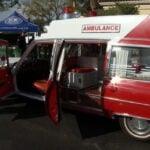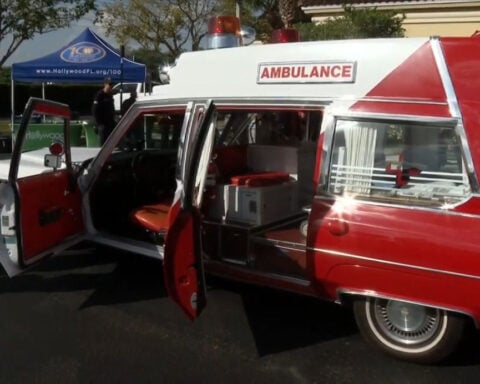As you drive down rain-slicked highways or winding rural roads late at night, have you recently found yourself squinting against the glare of oncoming headlights that seem brighter than ever? You're not alone on the road.
In recent years, high-intensity LED headlights have rapidly overtaken old halogen bulbs across most vehicles. While these crisper white lights provide improved visibility for drivers, they also cause mass discomfort and frustration, according to experts and many drivers.
Jennifer Stockburger, the director of operations at the renowned Consumer Reports Auto Test Center, confirmed that LED lights are "whiter in color" compared to the yellowish hues of traditional halogen bulbs. And this change is producing headlights that meet federal regulations for brightness but still overwhelm our eyes.
Recent surveys by the National Highway Traffic Safety Administration (NHTSA) found that over 75% of drivers on American roads are routinely bothered by the glare of increasingly popular LED headlights. Additionally, over 65% of drivers admitted to being momentarily blinded by highly bright oncoming LED lights while driving at night.
This dazzling issue spikes into an even more significant problem during wet nighttime driving conditions, when rain, mist, and humidity cause light glare far more easily bounce back into our vision. The rapid rise of extremely tall SUVs and trucks on roads has also aimed headlights directly at the average passenger car driver's sightline.
David Aylor, the vice president of research at the renowned Insurance Institute for Highway Safety (IIHS), stated that despite regulations, the aim of real-world headlights is the core problem, allowing LED lights to shine into the eyes of other drivers. When mounted on taller trucks and SUVs, some LED lights can project light directly into drivers' vision in lower vehicles around them.
A recent Consumer Reports study analyzing an extensive sampling of vehicle owners showed nearly 50% had been forced to temporarily avert or shield their eyes from painfully bright oncoming LED headlights over the past year alone. Even worse, over 35% reported being forced to pull over to the side of the road at night until the vehicle with bright headlights had fully passed by them.
Stockburger urged drivers to use road lines and markings as guidance and avoid staring straight into bright LED lights whenever possible. But she agreed pullovers are necessary if LED light glare from an oncoming vehicle is so overwhelming that seeing the road ahead becomes difficult. Recently developed adaptive driving beam headlights can automatically dim sections pointing directly at other cars to reduce glare, but these remain rare and expensive options thus far.
As the high beams from blinding LED light sources continue to expand rapidly on roads all across America, regulators are under growing pressure from drivers to address this rising plague infecting our nation's nighttime driving experience. Stockburger cautiously stated that despite the significant frustrations voiced, no statistical spike in evidence has yet directly linked brighter LED lights to causing increased crashes or accidents thus far.
But with meaningful action taken soon, this widespread headlight pet peeve may evolve into a legitimate safety issue that can be addressed. At the same time, visibility and illumination under normal conditions have improved thanks to LED advancements, that illumination crosses into dangerous incapacitation when extremely intense light overpowers the eye's natural adjustment abilities.
Additional data also demonstrates how intensely bright LED lights impact driving habits in the dark. A study by Quality Planning Corporation analyzing tens of thousands of auto insurance claims found collisions with deer increased over 15% after sunset in areas that had converted to intense blue-tinged LED street lighting. Deer generally avoid vibrant white light, meaning darker roads likely encouraged them to roam neighborhoods more freely at night. These behaviors mirrored across the country could also translate into LED headlights influencing deer and driver habits on rural roads.
Without proper regulations and innovative solutions to excessive glare, the US may continue trailing Europe in the pragmatic adoption of new lighting technologies. Jennifer Stockburger pointed out that our rules differ slightly from EU standards, causing American automakers to be cautious when rolling out advanced solutions already implemented across European vehicles. Features like adaptive driving beam headlights and swiveling LED arrays that can open specific sections to avoid shining directly at other drivers have been legally used abroad for over a decade but only arrived in the US due to rule changes last year.
In addition to discomfort and inconvenience, permanently impaired vision can occur in severe cases of bright light overexposure while driving at night. The American Academy of Ophthalmology provided worrying statistics that bright LED light sources can contribute to "photoretinitis" events, leading to permanent loss of sight in center vision areas if a person stares inadvertently at intense lights. While rarely occurring, the threat only compounds current frustrations with overly bright headlights.
To protect all drivers from future frustration and safety hazards, regulators must accelerate plans to catch up to Europe in managing the increasing intensity of new vehicular lighting technology. Jennifer Stockburger reiterated that features like adaptive dimming will likely take several years to become affordable and widespread in reasonably priced vehicles.
In the meantime, officials have suggested tinting treatments drivers can apply to windshields that filter out harsh blue light waves and glare. However, consumer groups advise checking local laws first, as some tints can illegally block too much incoming light. Interior low-glare dashboard covers, light-resistant eyewear, and re-aiming headlight units also provide options for alleviating overbearing LED light conditions.
Without efforts taken soon to implement more permanent nationwide solutions, the transition to piercing LED headlights threatens to blind, endanger, and frustrate drivers for many years to come. Though no correlation to crashes has emerged yet, the staggering statistics of affected motorists demonstrate action must be taken soon before an actual crisis emerges. Our roads are being illuminated like never before. Still, light itself can be overdone to the point it paradoxically threatens to cast a large shadow over the driving experience for all.

 Antique ambulance makes trek from California to Hollywood, FL to win spot in the record books
Antique ambulance makes trek from California to Hollywood, FL to win spot in the record books
 China's shipbuilding dominance poses economic and national security risks for the US, a report says
China's shipbuilding dominance poses economic and national security risks for the US, a report says
 Missing teen killed and dismembered, police say
Missing teen killed and dismembered, police say
 Former Philippines President Duterte forced onto plane to The Hague after ICC arrest, his daughter says
Former Philippines President Duterte forced onto plane to The Hague after ICC arrest, his daughter says
 Australian snowboarder Belle Brockhoff suffers broken back after high-speed crash
Australian snowboarder Belle Brockhoff suffers broken back after high-speed crash
 Trump slump: Can the president restore trust in his economic plans after his tariffs create fear?
Trump slump: Can the president restore trust in his economic plans after his tariffs create fear?
 ‘Big one to eliminate’: Elon Musk spotlights cost of federal entitlements amid fear of cuts to programs
‘Big one to eliminate’: Elon Musk spotlights cost of federal entitlements amid fear of cuts to programs
 High school senior says viral track meet injury was an accident
High school senior says viral track meet injury was an accident








